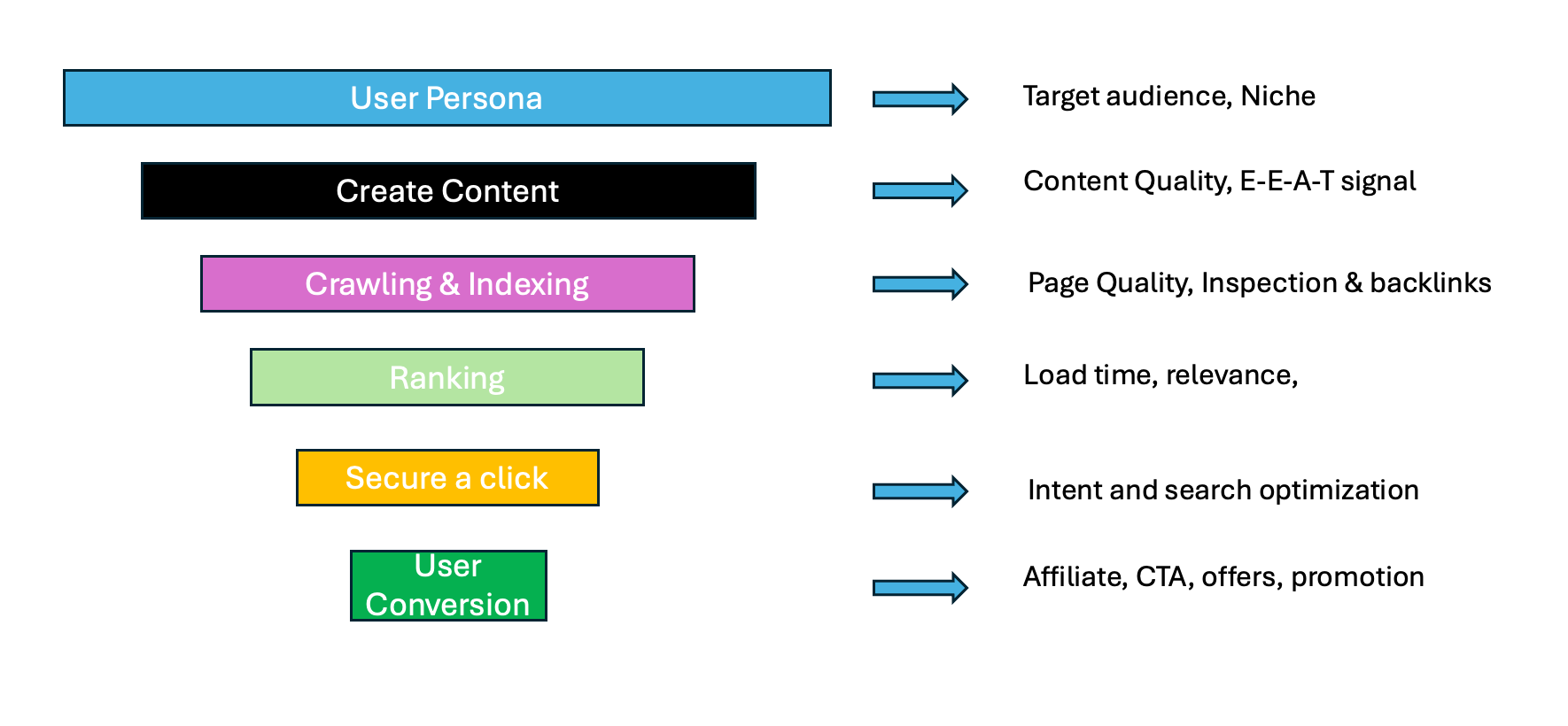Building an SEO Revenue Funnel That Delivers Results for Your Business
Keeping conversion as the end goal helps us understand how optimizing for organic search supports business priorities and communicates the value of SEO to stakeholders.

The SEO revenue funnel is a structured approach that guides potential customers from the initial stage of discovering your website to ultimately making a purchase or taking another desired action. This journey is crucial for businesses looking to leverage SEO for maximum profitability. Understanding and optimizing each stage of the funnel ensures that your web pages not only attract traffic but also effectively convert that traffic into revenue.

To build an effective SEO funnel that delivers results for your business, it's essential to understand and optimize each stage of the customer journey. Here's a detailed breakdown based on the specified headlines.
User Persona
Creating a user persona is foundational for developing an SEO funnel. A user persona represents your ideal customer, encompassing demographics, interests, pain points, and behavior. This persona guides your content creation and SEO strategies, ensuring they resonate with your target audience. Understanding your users’ search intents helps tailor your messaging and content to meet their specific needs at various funnel stages, ultimately enhancing engagement and conversion rates.
Content Creation
Content is at the heart of the SEO funnel. High-quality, relevant content aligned with user search intent attracts organic traffic and builds trust. This includes blog posts, infographics, videos, and case studies that address the needs and questions of your audience. Effective content strategies should incorporate keyword research to identify valuable topics and optimize for on-page SEO elements like title tags, meta descriptions, and internal linking to improve visibility in search results.
Crawling and Indexing
Crawling and indexing are critical processes that determine whether your content appears in search engine results. Search engines use bots to discover and index your pages, which is influenced by your site's structure, internal linking, and sitemap submission. Ensuring your website is technically sound and optimized for crawling can prevent important pages from being overlooked. This includes managing your crawl budget effectively to ensure that search engines can access and index your most valuable content.

Ranking
Once your content is indexed, the goal is to achieve high rankings for relevant keywords. This involves optimizing your content for search engines by using targeted keywords, improving site speed, and enhancing user experience. Regularly monitoring keyword performance and making adjustments based on analytics data can help maintain and improve your rankings over time. Understanding how your audience searches and what devices they use is also crucial for tailoring your content appropriately.

Secure a Click
To secure clicks, your search result snippets must be compelling. This involves crafting enticing title tags and meta descriptions that encourage users to click through to your site. Utilizing rich snippets and structured data can enhance visibility in search results and improve click-through rates. Additionally, ensuring that your content meets the expectations set by your titles and descriptions is vital for reducing bounce rates and increasing engagement.
User Conversion
The final stage of the SEO funnel is user conversion, where the goal is to turn visitors into customers or leads. This can be achieved through clear calls to action, optimized landing pages, and effective follow-up strategies such as email marketing. A/B testing different elements on your pages can help identify what resonates best with your audience. Continuously analyzing conversion rates and user behavior allows for ongoing optimization of your funnel, ensuring that it remains effective in driving results.
By carefully managing each stage of the SEO funnel—from understanding user personas to optimizing for conversions—you can create a robust strategy that not only attracts traffic but also converts visitors into loyal customers.




